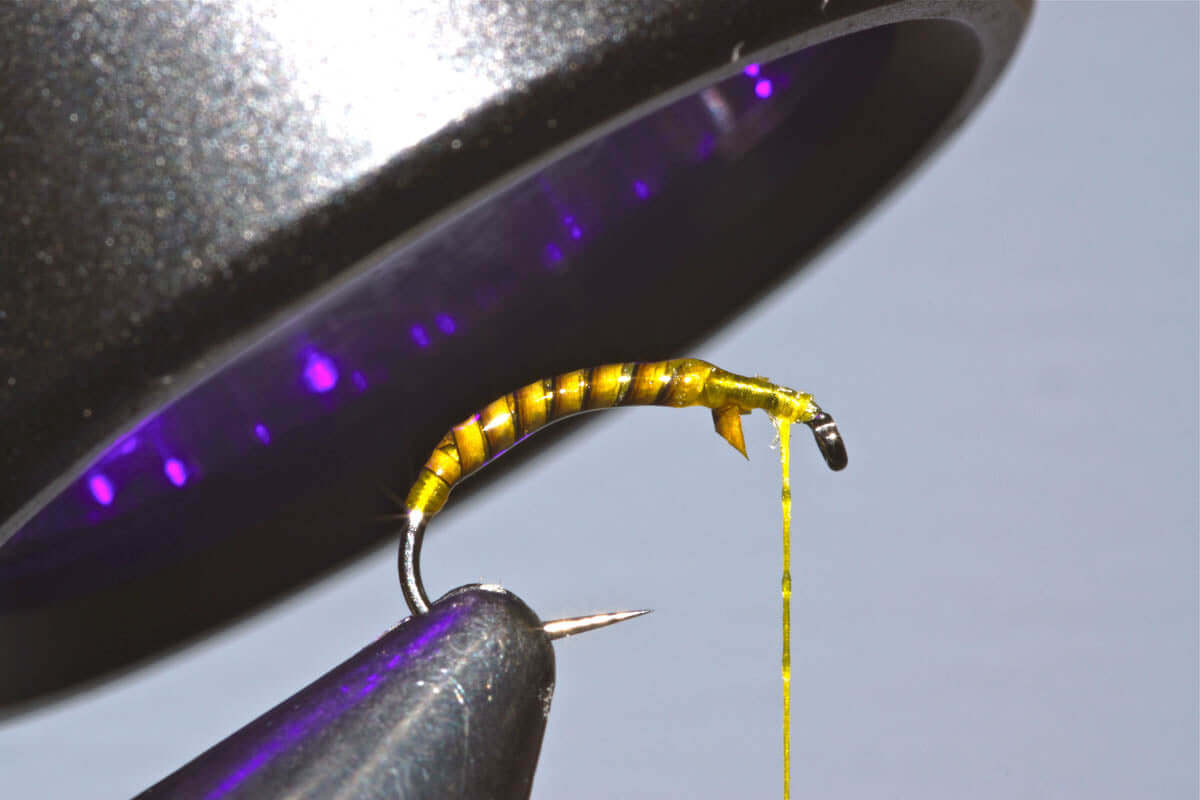By David Southall
Fly tying is an art, with some folks like Oliver Edwards & Steve Thornton producing unbelievably realistic imitative patterns; however I’m one of those tiers that seek to produce the simplest pattern that will fool the fish. Fish have tiny brains & it has long been known that it only requires very simple ‘releasers’ to trigger certain behaviour patterns. I’ve mentioned previously that the only thing needed to trigger aggression in male sticklebacks during the breeding season is the colour red, whilst the only thing needed to trigger their courtship display is an object that is the same shape as an egg-bound female stickleback. I am convinced that we do not need complex flies to fool feeding fish. I believe that key triggers are size, basic shape, position & behaviour on, in, or under the water & sometimes colour.
One of my favourite dry flies is the CdC Shuttlecock. It is a pattern that I often use when I want to fish a dry fly but don’t know what the fish are taking. So why exactly do I love them? In no particular order:
- They are very simple to tie
- If well tied, using the method described, they are incredibly durable (I’ve had over 50 fish on the same fly)
- In sizes 30 to 12 they imitate a variety of insects including emerging Chironomid Midges, emerging Olives & drowning Terrestrials
- Their submerged body ‘anchors’ them into the surface film, making them less susceptible to micro-drag
- The submerged body also indicates a food item that is highly vulnerable, being unlikely to fly away
- The vertical, grey-brown, natural Mallard CdC wing is highly visible in most conditions
I’m fairly convinced that fish see little of the colour of a dry fly when it is silhouetted against the sky so I’m not fussy about the colour of my Shuttlecocks (I’ve tried a range of coloured bodies & even different coloured CdC wings, the latter to aid visibility, & have not found any difference in efficacy). I’ve also found no difference in the performance of this fly tied on Grub hooks or Straight Shanked hooks. What is important is to balance the amount of CdC used in the wing with the weight of the submerged body so that the body submerges & the fly cocks instantly but there is enough hydrophobic wing surface area to support the fly in the surface film. Trial & error & experience allow me to match the bulk of the CdC fibres with the hook size, weight & body material.
If I’m in a rush I often just use thread for the abdomen and thorax, coated with varnish, Super Glue or UV resin to strengthen it and to aid cocking. The fish take these simplified versions just as well as the more aesthetically appealing ones, however, for aesthetic reasons, I like to tie the body with stripped peacock herl coated with UV resin or alternatively fine dubbing with a rib of fine copper wire, both of which help the fly to ‘cock’. I usually use 3 natural mallard CdC feather tips for the wings, but vary the size/barb density of the feathers depending on the weight of hook used. I always treat the CdC with a thin smear of Roman Moser Miracle Float, (available from Stuart Wardle at Durham Flyfishers web site), which works brilliantly on CdC flies or hydrophobic Fumed Silica Powder. Some folks seem to have trouble keeping their CdC flies afloat, particularly after catching a fish or two. I have no such problem. My routine to rejuvenate slimed up/waterlogged CdC after catching a fish is as flows:
- Rinse the fly well in the river/lake.
- Dry thoroughly by squeezing then rubbing with a piece of clean Kitchen Paper towel. I do not use Amadou since it soon gets contaminated with hydrophilic (water-loving) fish slime that renders it useless. Kitchen paper can be binned when it gets contaminated.
- Spread a drop of Miracle Float between thumb and forefinger and rub into the CdC wing (or brush over with Fumed Silica powder).
With this treatment I’ve caught dozens of fish on the same fly even on damp, drizzly days.
Tying a Shuttlecock

- Wind 8/0 thread from eye to part round the bend and back towards the eye for 2mm then tiein stripped peacock herl.

- Wind thread ¾ way to eye and coat the abdomen area with Super Glue.

- Wind the stripped herl over the wet glue to ¼ from eye and tie in.

- Trim tag end of the herl and apply a drop of thin UV resin to the body.

- Spread the UV resin evenly over the herl.

- Fix the UV resin with a UV light.

- Line up the tips of 3 natural CdC plumes and tie on top of the hook ¼ back from the eye with 2 loose turns of thread.

- Pull the tips to length and bind down with 2 tight turns. Then wrap 2 tight turns horizontally between the CdC and body to lock in the CdC and then 2 or 3 turns immediately infront of the CdC to semi-post up the wing.

- Trim the butts of the CdC and dub a pinch of Hare’s Ear onto the thread.

- Dub a Hare’s Ear thorax and whip finish.
































